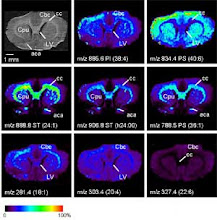The storage, processing, description, transmission, connection, and analysis of the waves of new genomic data have made bioinformatics skills essential for scientists working with DNA sequences. In Bioinformatics for DNA Sequence Analysis, experts in the field provide practical guidance and troubleshooting advice for the computational analysis of DNA sequences, covering a range of issues and methods that unveil the multitude of applications and the vital relevance that the use of bioinformatics.
This application note describes the high-throughput isolation of genomic DNA from different populations of three-spined stickleback as well as from three-spined stickleback eggs using Invisorb DNA Tissue. The results showed that the extracted genomic DNA can be used for high scale genotyping and genotyping of adaptive and ecological relevant genes. Integration of DNA sequencing into the drug discovery process will allow the identification of specific patient populations as well as identifying diagnostic or theranostic markers. DNA sequencing offers the most reliable and accurate method of grouping individuals into characteristic genetic profiles.
Deoxyribonucleic acid (DNA) sequence analysis of the control region of the mitochondrial DNA (mtDNA) genome was used to identify human skeletal remains returned to the United States government by the Vietnamese government in 1984. The postmortem interval was thought to be 24 years at the time of testing, and the remains presumed to be an American service member. DNA typing methods using nuclear genomic DNA,
be 24 years at the time of testing, and the remains presumed to be an American service member. DNA typing methods using nuclear genomic DNA,
This application note by Anagnostics Bioanalysis describes a fast and efficient method to verify hundreds of gene sequences of interest in parallel. Sample preparation through integrated thermocycling, washing, hybridisation and detection is presented. Pharmaceuticals Incorporated is a global biotechnology company committed to the discovery and development of breakthrough small molecule drugs for serious diseases.
DNA sequencing is most frequently used to determine genome sequence. An example of this type of application is the human genome project. Five years after the completion of the human genome project, we are seeing its impacts on biomedical research. Several genes have been identied to associate with genetic conditions, including familial breast cancer and colorectal cancer, Alzheimer's disease, myotonic dystrophy, neurofibromatosis.
This application note describes the high-throughput isolation of genomic DNA from different populations of three-spined stickleback as well as from three-spined stickleback eggs using Invisorb DNA Tissue. The results showed that the extracted genomic DNA can be used for high scale genotyping and genotyping of adaptive and ecological relevant genes. Integration of DNA sequencing into the drug discovery process will allow the identification of specific patient populations as well as identifying diagnostic or theranostic markers. DNA sequencing offers the most reliable and accurate method of grouping individuals into characteristic genetic profiles.
Deoxyribonucleic acid (DNA) sequence analysis of the control region of the mitochondrial DNA (mtDNA) genome was used to identify human skeletal remains returned to the United States government by the Vietnamese government in 1984. The postmortem interval was thought to
 be 24 years at the time of testing, and the remains presumed to be an American service member. DNA typing methods using nuclear genomic DNA,
be 24 years at the time of testing, and the remains presumed to be an American service member. DNA typing methods using nuclear genomic DNA,This application note by Anagnostics Bioanalysis describes a fast and efficient method to verify hundreds of gene sequences of interest in parallel. Sample preparation through integrated thermocycling, washing, hybridisation and detection is presented. Pharmaceuticals Incorporated is a global biotechnology company committed to the discovery and development of breakthrough small molecule drugs for serious diseases.
DNA sequencing is most frequently used to determine genome sequence. An example of this type of application is the human genome project. Five years after the completion of the human genome project, we are seeing its impacts on biomedical research. Several genes have been identied to associate with genetic conditions, including familial breast cancer and colorectal cancer, Alzheimer's disease, myotonic dystrophy, neurofibromatosis.

